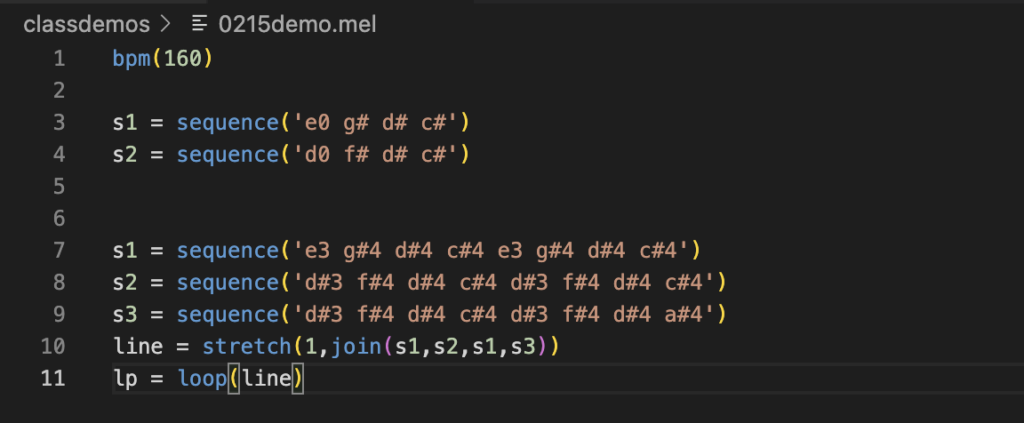The text explores different approaches to live coding, with some individuals relying on pre-written code, while others start from scratch with no preparation. It notes that the emphasis on “liveness” in live coding is not meant to undervalue or underestimate the programming and practice that occur behind the scenes or before a live coding performance. Instead, the goal is to draw attention to the unique dynamics that arise during real-time live coding.
In my experience, the main factor that prevents me from adding new layers live is the unpredictability of the notes I might enter. For example, what if the notes I play clash with the current sound? What if they’re in different keys, creating harsh dissonance? I think these concerns stem from my past reliance on traditional digital audio workstations (DAWs), where I would improvise on a MIDI keyboard to determine which notes to use. Even when I prepare for a live coding performance, I often rely on this method to generate new ideas for my code. Besides this, I try to experiment more with adding effects and functions to my existing code during live demonstrations.
The text also notes that “live coding involves a sense of embodied awareness, where knowing how and when are just as important as knowing what. Unlike some forms of computer-generated performance, live coding demands heightened levels of dexterity, focus, cognitive agility, and tactical intelligence.” This resonates with me because I tend to trigger new lines of code only at the end of a cycle or a four-beat loop, which helps smooth transitions.
I also want to point out that the “liveness” in coding is not just about the interaction between the performer and the computer, but also about the interaction between the performer and the audience. This made me wonder how that human-to-human interaction could manifest in live coding performances.

